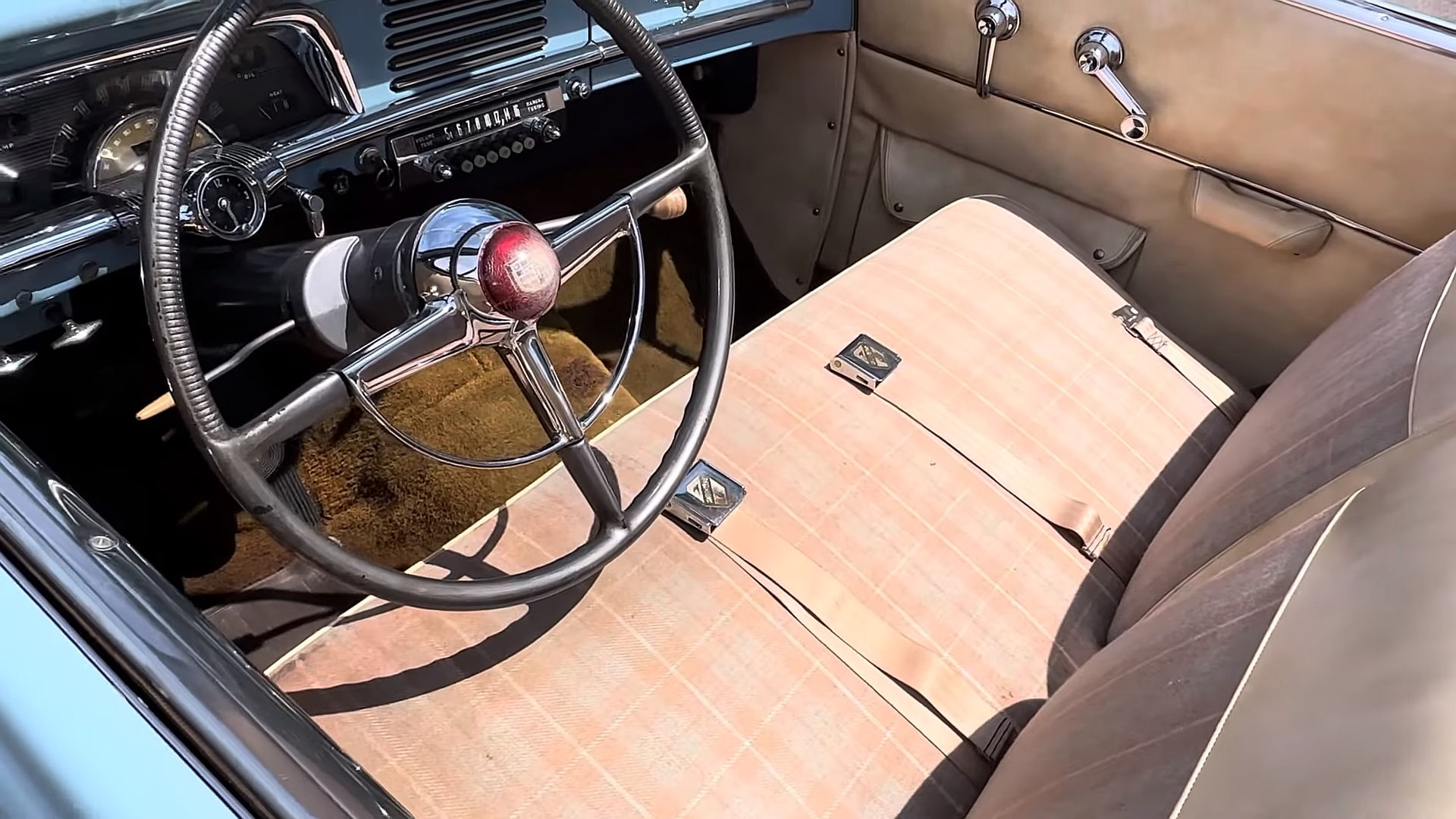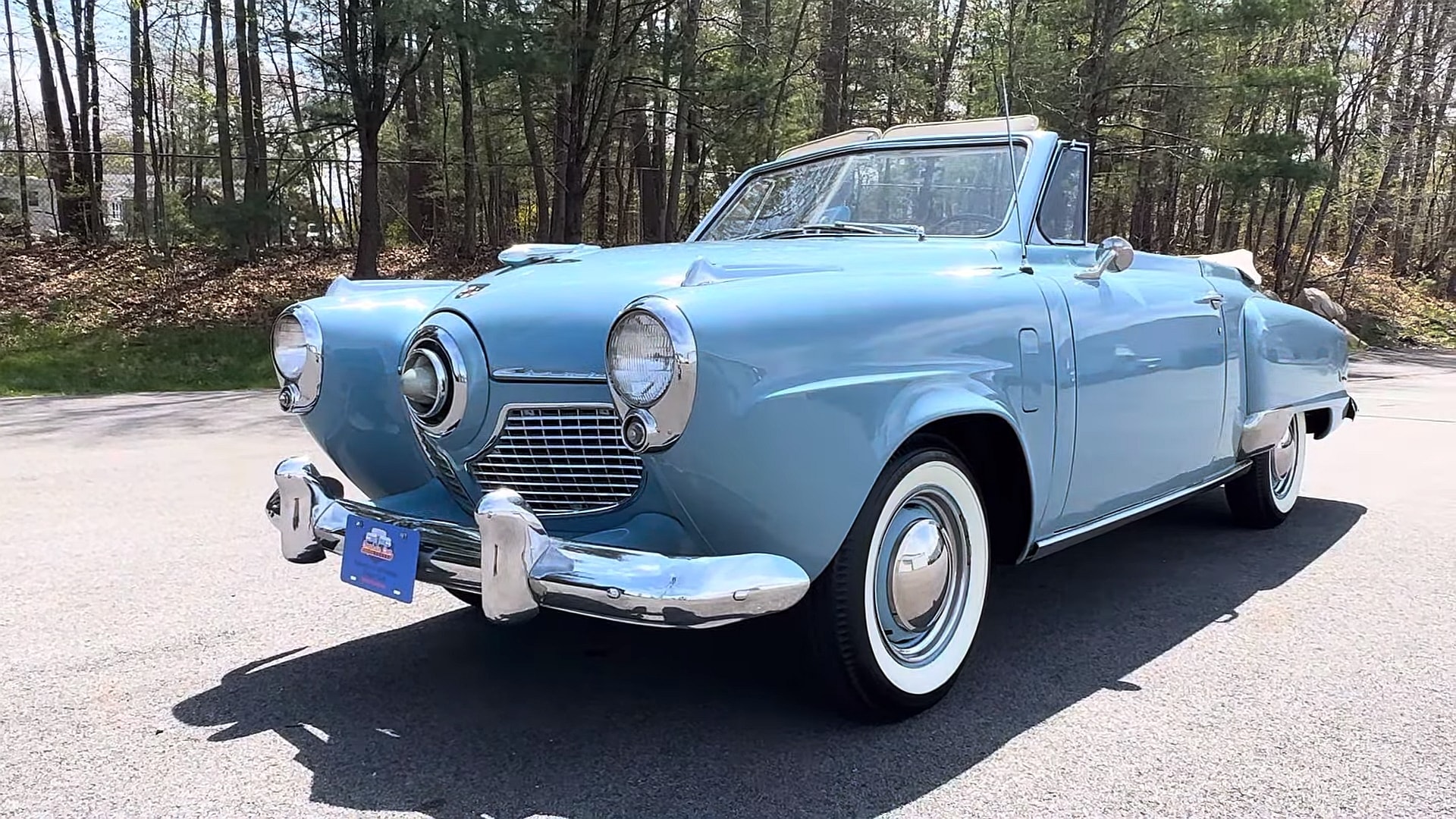After World War II, Studebaker made a striking return to the automotive market with a complete redesign of their Champion and Commander models in 1947. These new models, crafted by Raymond Loewy, boasted innovative features like flat front fenders and distinctive wraparound rear windows.
By 1950, Studebaker further cemented its reputation for bold design by introducing the iconic bullet-nose front end, giving the Champion and Commander a distinctly futuristic appearance. This period marked the emergence of Studebaker’s unique design language, setting them apart in the post-war automobile industry. The 1951 Champion convertible, featured by YouTube’s “Orphan Car Garage,” is one of the finest examples of this era.

Despite being restored in 1984, the car’s exterior remains stunning, and its interior is well-preserved. Only 4,742 convertibles were made in 1951, making this model relatively rare.
The restoration used authentic new-old-stock parts, a practice easier in the 1980s when Studebaker had a surplus of parts after closing its main plant in 1963 and its Canadian facility in 1966. Studebaker’s 115-year history ended in 1967, but preserved models like this Champion keep its legacy alive.

